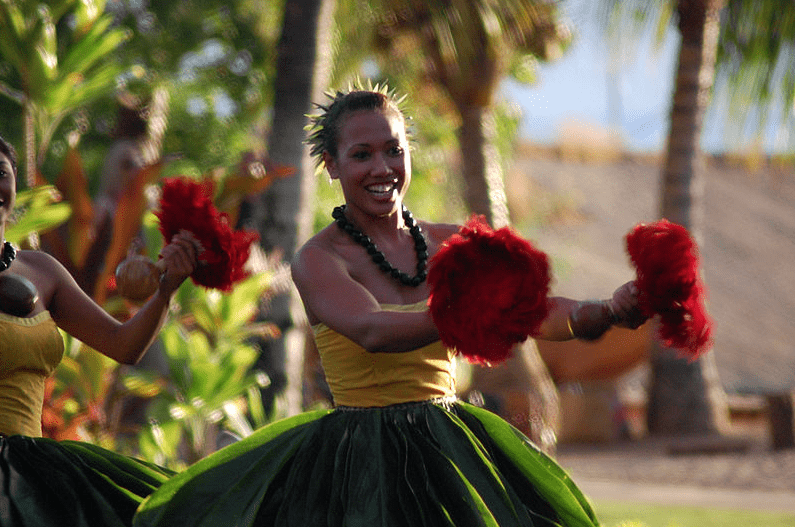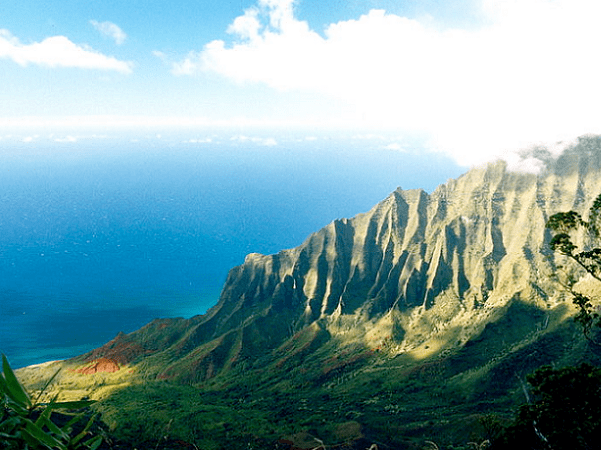Anyone who has visited Hawaii knows that the islands are rich in unique traditions and customs. First populated by Polynesians in 400 CE who traveled more than 2,000 miles from Polynesia by boat, Hawaii is a wonderful, sought-after, and vacation-oriented state (America’s 50th!).

The Polynesian migrants cultivated a distinct society completely isolated from the rest of the world. However, the islands were discovered in the late 18th century by an English explorer named Captain James Cook. Since that time, Hawaiian traditions and cultural practices have captivated all who have visited, creating one of the most attractive tourist destinations in the world.
Whether you are Hawaiian yourself, are planning a visit to the islands, or are just interested in learning more about their history, we’ll cover the basics with this quick guide to Hawaii traditions and customs!
Hawaiian Greetings and Etiquette
One of the most distinctive Hawaiian traditions is the famous Honi Ihu greeting. While it is common to see Hawaiians greet one another with a hug and kiss on the cheek, the traditional Hawaiian greeting involves touching noses, regardless of gender.
The root of this tradition lies in the exchange of a breath, which has a deep spiritual significance to the Hawaiian people. Additionally, touching noses allows each person to get a scent of the other, exemplifying a close relationship and comfort. If you plan on greeting a Hawaiian through Honi Ihu, it would be wise to keep yourself in a reputable state of cleanliness.
As most people know, Aloha is a common greeting on the islands. The word is used both when greeting a person and when parting ways, so feel free to use it for both Hello and Goodbye.
Hawaiian cultural practices also retain some important etiquette worth noting:
- Always take off your shoes when entering the house of a Hawaiian. This will symbolize respect for the owner of the property.
- Avoid honking your car horn on the islands unless you mean it in a friendly way. Honking is considered rude by local people and used sparingly.
The Values of the Islands
Over the years, Hawaiians have developed their own cultural values that are distinct from many other parts of the world.
The term Malama Aina signifies caring for the land. It is a tradition for the Hawaiian people to feel especially connected to their islands, as they provided the people with all the sustenance they needed for more than a millennia. Malama Aina is an extremely important value for every Hawaiian, so be sure to respect this tradition.
Hawaiians also value humility above all other values. People are generally not respected for their financial worth or social status, but more for their modesty and treatment of others. Living a beautiful life of luxury may be the goal in many parts of the world, but isn’t necessarily respected or appreciated in Hawaii.
The word ‘Ohana means family in the Hawaiian language. When the Hawaiian people use this word, they are not simply referring to blood relatives, but close friends as well. Community is an extremely important part of Hawaiian culture, so if you are lucky enough to be referred to as ‘Ohana, you are definitely on the path toward integrating into the culture.
Dress in Hawaii
Hawaiians are of course also known for their traditional dress. When visiting Hawaii, you can expect to be greeted with a Lei – a necklace of flowers that you should wear around your neck. The Lei is a common greeting or parting gift in Hawaii that’s especially popular at parties and celebrations.
Many Hawaiians will also wear a flower on their left ear, to symbolize that they are in a relationship. While this tradition has not been proven to be rooted in old Hawaiian culture, it has become commonplace in recent years.
Aloha wear is also very common on the islands. Hawaiian people are famous for wearing bright-colored, flowery shirts and dresses now popular throughout the world. The “Hawaiian Shirt” is a form of clothing in and of itself. It’s like you’re familiar.
Hula skirts also represent a distinctive part of Hawaiian culture but are typically reserved for traditional dancers.
Holidays and Festivities
The islands are also renowned for their holidays and festivities. Of course, the most famous of these is a Luau.
Fun fact: Few people are aware that the name Luau is a misnomer, and is actually one of the most popular ingredients in Hawaiian food. This title derives from a mistake made by a newspaper in the 19th century and has resulted in most people referring to Hawaiian parties as such ever since.
The proper term for a Luau is either Paina, which means dinner party, or Ahaaina, meaning feast.
Hawaii also celebrates two holidays that are worth noting:
- Kamehameha Day, which celebrates the first king of Hawaii, is the biggest traditional Hawaiian holiday. If you are lucky enough to be in the area on the 11th of June, make sure you attend the Ho‘olaule‘a, or festival, celebrating this ancient holiday.
- May Day (1st of May) takes on a new form in Hawaii: Lei Day. People across the islands compete in an annual Lei competition with a grand prize awarded to the best entry.
Acceptable Gifts
Gifts are also an important part of Hawaiian customs and traditions. It is typical for Hawaiians to gift food when visiting another household.
If you are visiting a friend or family in Hawaii, it would be appropriate to bring a typical or famous food from your place of origin, as many items are not available on the islands.
Conversely, Hawaiians frown upon removing sand, stones, or lava rocks from the local beaches or volcanos. This is generally considered bad luck in Hawaiian culture, so you are better off not using these items as gifts – nor taking them home with you.
Traditions and Customs on the Islands
Understanding Hawaiian traditions and customs is one of the best ways to jumpstart your exploration of the islands and its people. The islands’ rich cultural heritage makes it an ideal destination for many travelers.
If you are of Hawaiian descent, there is a wealth of information to explore regarding your genealogy and historical background through GenealogyBank’s Historical Newspaper Archives. Dive into the beautiful history of your ancestors and sift through our various historical records today! Read about Hawaiian last names and their meanings so that you can have a better understanding of your background. You never know what you might find, or what stories you’ll uncover about the very people that paved the way for your existence.
And Hawaiian bloodlines are absolutely fascinating, with a rich history that spotlights the peoples’ deep appreciation for Mother Nature, community, and family.
Sources:
- Culture Trip: 10 Hawaiian Traditions Worth Knowing.
- Smithsonian Magazine: Hawaii – History and Heritage.
Related Article:
Similar Articles:
